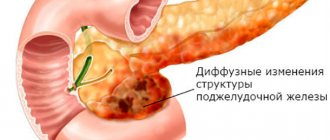A disease that has a number of different symptoms and their combinations, which can also be attributed to disorders of other body systems, is osteochondrosis. The widest range of symptomatic disorders occurs when the disease is localized in the cervical region; one of the dangerous signs of this disease is dizziness.
If disturbances of the vestibular apparatus, a feeling of “woolly legs”, or dizziness occur, it is recommended to immediately consult a doctor, and sometimes it is advisable to call an ambulance.
Dizziness with cervical osteochondrosis responds well to treatment, provided that therapy is carried out and all the instructions of the attending physician are followed. If therapy is not carried out, the situation is likely to worsen and a set of other manifestations will occur, such as:
- Pain of varying degrees in the ears, back of the head, chest, shoulder, which can significantly intensify with head movements;
- Weakness, malaise;
- A distinct crunching sound when turning the head;
- Visual impairment, spots, multi-colored spots before the eyes;
- Loss of consciousness, numbness of the limbs and other unpleasant sensations in the arms and legs;
- Pain in the heart area.
Provoking factors
The spinal column is under constant enormous stress, and most people do not even think about how to reduce the negative effects on this organ. First of all, you need to develop the habit of maintaining your posture. If a person sits for a long time and slouches, there is a regular curvature of the spine and an increase in the load on certain areas of it.
Muscle tension, as a result of incorrect posture, excessive stress and lack of training, negatively affects blood vessels, nerve endings and vertebrae. The vessels through which blood enters the brain are compressed by muscle spasms, and in addition to pain in the cervical region, the person feels dizzy. Blood is food for cells, blood contains oxygen, lack of oxygen or hypoxia leads to various consequences from short-term fainting to coma.
Why does nausea occur with osteochondrosis?
The symptom occurs when the underlying disease worsens. This happens in the following cases:
- If the patient puts a large load on the diseased spine.
- For frequent stress and nervous disorders.
- If a person is overweight or obese.
- When drinking alcohol and junk food.
- Due to exposure to illness, infection, or severe hypothermia.
- If the patient is hunched over and does not maintain correct posture.
- Sitting during the day worsens the disease and leads to nausea.
Patients complain that nausea occurs after a long stay in one position. Try to do light warm-ups throughout the day, change your body position and walk outside more often.
What is the expression of cervical osteochondrosis?
In case of a dystrophic condition of the cartilage and bone tissue of the cervical spine, the following symptoms can be noted as indirect:
- Dizziness occurs in most cases in the morning, after resting on a high pillow;
- There is a feeling as if the ground under your feet begins to move;
- Dizziness and nausea often occur with cervical osteochondrosis;
- Surrounding objects, especially those “caught” by peripheral vision, begin to move.
You may be interested in: Treatment of cervical chondrosis at home
Such manifestations are often accompanied by ringing, tinnitus, the appearance of ataxia, a decreased sense of balance, and an increase in headache. Dizziness with osteochondrosis, when the above symptoms appear, can be supplemented by hyperhidrosis, cyanosis of the skin, in particular the face, and painful sensations. Patients note that with severe dizziness, vomiting occurs; to prevent ingestion of vomit, in case of possible loss of consciousness, it is necessary to lie on your side.
Many patients believe that osteochondrosis is characterized by short-term painful attacks and other symptoms that quickly pass. If there is pain, for example, in the right hypochondrium, lasting more than a day, many attribute this pain to cardiac problems. Deformation of the musculoskeletal system in the collar area can also provoke prolonged pain, pinching of nerve endings, accompanied by numbness, dizziness and other neurological symptoms.
Possible causes of nausea
With osteochondrosis of 2-3 degrees of severity, frequent compression of the vertebral artery by osteophytes and displaced vertebrae is observed. Protrusion leads to infringement - partial protrusion of the nucleus pulposus beyond the space between the vertebrae. And when an intervertebral hernia forms, the compression of a vital blood vessel becomes permanent. As a result, insufficient blood flows to the brain. A state of hypoxia, or oxygen starvation, occurs - the main cause of impaired coordination of movement.
Intervertebral hernia.
The cerebellum begins to receive signals about acute oxygen deficiency, which leads to a disorder of coordination of movements by the vestibular apparatus located in the middle ear. Therefore, when the vertebral artery is pinched, nausea is often accompanied by dizziness, tinnitus, and decreased hearing acuity.
Treatment of dizziness
Everyone knows that it is easier to prevent than to throw all your energy into fighting an already acquired disease. But until a person feels pain, until his illness begins to interfere with his family, career, and other higher-priority interests in life, he does not think about the importance of health and does not consider it necessary to treat the disease.
Rare “bells” from our patient body, in the form of fatigue or slight discomfort, are more often ignored, or at most, drowned out by painkillers and sedatives. At that time, the problem worsens, acute diseases turn into chronic forms, osteochondrosis continues to “spoil” bones and cartilage. If dizziness often occurs as a symptom of osteochondrosis of the cervical spine, then there is a high probability of problems with blood vessels.
If at the initial stage the inflammation can be relieved with medication, then developed and complicated osteochondrosis will require surgical intervention. Surgery may be required in cases, for example, when it comes to discogenic artery syndrome. When blood vessels are deformed, there is a high probability of a stroke, so in such a situation surgery is advisable, and sometimes represents the only way to save life.
You may be interested in: Exercises for osteochondrosis of the lumbar spine
Starting treatment at the first signs of the disease, in particular eliminating dizziness, allows you to quickly establish a stable remission and completely eliminate the cause of the ailment. To combat the disease, the doctor directs a set of measures, often representing the following combination:
- Drug treatment;
- A diet aimed at stabilizing metabolic processes in the body;
- Exercises that increase tone and restore elasticity to muscle tissue, as well as aimed at eliminating spasms;
- Correct posture when walking, sitting and equipping the sleeping place with a hard orthopedic mattress with a low pillow or without a pillow.
When developing a healing complex, neurologists, vertebrologists and therapists direct therapy not to one system of the body, but to all organs involved. The process of restoration of cerebral circulation must be monitored.
A high therapeutic effect was noted when using water procedures. Exercise therapy in the pool, hydromassage, neck brace and other means that directly affect bone and muscle tissue allow you to quickly eliminate pain. Sometimes physical exercise is enough to get rid of pain and there is no need for painkillers.
Regular stretching, for example, as in various yoga techniques, provides a lasting positive effect. For cervical osteochondrosis, treatment is carried out on an outpatient basis, and only in severe cases does hospitalization make sense.
During the period of treatment and rehabilitation, it is necessary to control physical activity. Avoid overexertion, hypothermia, shocks, and falls. Any provoking factor can significantly aggravate the condition and treatment will have to start all over again, sometimes choosing a different system.
How does nausea manifest itself?
Sometimes a person suffering from osteochondrosis may experience dizziness. After this, an unpleasant feeling of nausea begins. The symptom most often occurs with osteochondrosis of the cervical spine. Patients complain of attacks mainly in the morning. Nausea begins to intensify with any sudden movement, sneezing or coughing. If the pressure has risen due to cervical osteochondrosis, then the patient will have chest pain and a strong urge to vomit.
At an advanced stage of osteochondrosis, a person may experience nausea, dizziness and pain every day. It is necessary to begin comprehensive treatment and immediately consult a doctor.
How to get rid of dizziness
Dizziness with osteochondrosis is a consequence of poor blood flow. To eliminate dizziness, it is necessary to restore the flow of oxygenated blood to the brain. What can be done:
- Take a different position, straighten your neck;
- Take a contrast shower to dilate blood vessels;
- Apply rubbing with warming drugs, for example, menovazine;
- Do gymnastics for the collar area (bending and rotating the head, duration of at least 2-3 minutes);
- Get out into the fresh air.
Treatment with medications is best done after consultation with your doctor.
If dizziness is severe, you must immediately take a sitting or lying position, ventilate the room if possible, and call a doctor.
Correct treatment
The treatment of cervical osteochondrosis should be carried out by a qualified physician who will prescribe a therapeutic regimen individually for each patient.
To eliminate the nausea that accompanies neck osteochondrosis, you first need to eliminate oxygen starvation of the brain. To do this, you need to unbutton your shirt collar, stand in front of an open window and take a deep breath of fresh air. It is useful to do special exercises:
- Sit on a hard, flat surface, cross your arms and, as you inhale, gently tilt your torso to the left, and as you exhale, straighten up. Do the same only on the right side, repeating the exercise 6-8 times.
- Press your forehead with your right palm for 11-16 seconds. Rest for 5-10 seconds. and repeat the exercise 4 more times.
Various neurometabolic stimulants that activate blood circulation in the vessels of the brain effectively relieve nausea. These include:
- "Noofen";
- "Afobazole";
- "Picamilon";
- "Aminalon".
There are also various antiemetic medications. The medications “Cerukal” and “Latran” are highly effective. However, it is worth considering that taking them is not recommended during breastfeeding and while pregnant. Therefore, in order to avoid the development of undesirable consequences, it is necessary to first consult with a specialized doctor. You can finally get rid of nausea only after complete recovery of osteochondrosis of the cervical spine. Medicines will only normalize the condition, while the root cause will remain, so treatment of the pathology of the vertebral discs of the cervical spine should be carried out comprehensively.
A clear explanation for amateurs
We will not tell you in detail the anatomy of the cervical spine. Yes, it has features related to the structure of the vertebrae, but that’s not what’s important. The most important elements supplying the brain are located in the cervical region - these are the vertebral arteries. There are only two of them, these are quite wide vessels. They form the so-called vertebral basin - the basilar basin, which provides from 15 to 30% of blood flow to the brain. The path of the vertebral arteries is complex - they, meandering, pass through the lateral openings formed by the processes of the vertebrae.
With cervical osteochondrosis, one or another part of the main vessel may be infringed due to degenerative changes in bone tissue and its growths, the blood supply to the brain deteriorates, causing various symptoms, one of which is nausea.
Features of innervation
Also, near each of the seven cervical vertebrae there are nerves responsible for certain organs. The relationship between innervation and the symptoms of osteochondrosis is obvious; we present it in the table below. Each cervical vertebra has its own number, from 1 to 7, all vertebrae of the department are designated by the Latin letter C.
| Cervical vertebra | Innervation | Pathological symptoms of infringement caused by vertebral diseases |
| C 1 (Atlas) | Inner ear, pituitary gland, head, brain. | Neurasthenia, headache, migraine, psychosis, dizziness, nausea |
| C 2 (axis) | Forehead, tongue, eyes, veins | Headache, hypochondriasis, torticollis, sweating, nausea |
| C 3 | Teeth, cheeks, outer ear, facial bones | Diseases of the nose, ear, blindness, deafness, nausea |
| C 4 | Oral cavity, nose, lips | Pathologies of the nose and ear, neurasthenia, headache, nausea |
| C 5 | Pharynx, vocal apparatus, pharynx | Pathologies of the oral cavity, nausea, hoarseness of voice |
| C 6 | Neck muscles, shoulder muscles, tonsils | Laryngitis, croup, respiratory pathologies such as shortness of breath and cough, nausea |
| C 7 | Elbows and shoulders, thyroid gland | Arthrosis, bronchitis, thyroid pathologies |
How to prevent the development of the disease
The basis for spinal health is proper nutrition, including the entire complex of vitamins and microelements, and moderate physical activity. Therefore, you should take care of the presence of animal and plant proteins, fats, and fiber in your diet.
Fish, chicken, beef liver, cereals, fresh herbs, as well as fruits and vegetables should be on the menu. If you already have a tendency to develop osteochondrosis, you should reduce your consumption of foods that contain a lot of oxalic acid.
Active movement, periodic changes of work and rest prolong the period of full mobility of the spine, contribute to the normalization of metabolism, and rapid regeneration of cartilage tissue. Therefore, you need to go swimming, dancing, and going skiing. It is worth limiting only those loads that can negatively affect the joints: jumping, sharp turns.
On this topic
- Osteochondrosis
6 facts about common osteochondrosis
- Natalia Sergeevna Pershina
- March 26, 2020
Every day you need to do a minimum set of exercises to maintain mobility of the cervical and thoracic spine:
- Perform circular movements with your shoulders.
- Try to close your shoulder blades.
- Try to connect your fingers behind your back in the area of the shoulder blades, when one hand rises from below, the other falls behind the head.
All exercises aimed at developing neck mobility must be performed extremely slowly and carefully. It is best to do them with the muscles as relaxed as possible, while bending the torso down in a standing position, when the head is lowered.
If the attack came suddenly
If an attack of nausea and dizziness occurs, it is necessary to provide the person with complete rest, try to sit him on a chair, turn off the bright lights, and dim the music. If only dizziness is observed, the patient should be asked to lie down and place a cushion under his feet.
If dizziness is accompanied by nausea, you need to help the person sit up. At the same time, he should tilt his head as low as possible and wait in this position for several seconds. You can drink water with lemon or put a lemon slice on your cheek.







